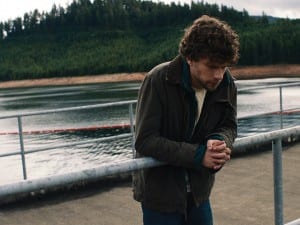In a sprawling megalopolis like Mexico City it can be a pain to get from one place to the next, making it complicated to coordinate group gallery openings. However, with the explosion of contemporary art in the Mexican capital galleries are becoming more integrated, connecting through mutual interests when its not possible to connect by proximity.
In a city of 22 million people its difficult to transcend the chaos into coordination. Galleries are spread out and openings are usually isolated events. But, at the end of September (running 19-21) the biggest contemporary art galleries in Mexico City coordinated a group opening spread out across nine boroughs. Gallery Weekend Mexico represents a survey of contemporary art in Mexico, including several dozen national and international artists. To help fluidly move art lovers from one gallery to the next the events organizers hired a fleet of shuttle vans that arrived every half hour along a designated rout.
The event featured an impressive 20 galleries making it nearly impossible to see everything. With such a large body of work comprising a plethora of themes and styles there was something for everyone and an inevitable few stand out shows. Galleries in Mexico City tend to be hidden in residential neighborhoods or between restaurants, indistinguishable among the mix of decaying Victorian era mansions with elegant curves and new, square lofts covered in glass and stainless steel.
One such gallery is the inconspicuous Talcual Contemporary Art Gallery in Colonia Juarez. For Gallery Weekend Mexico, Talcual presented a solo show by Rodolfo Dìaz Cervantes. The remodeled house in Zona Rosa usually blends into the neighborhood, home to many gay bars and Korean immigrants, but Cervantes successfully made the gallery the most noticeable building on the block by covering every surface, inside and out, in blue and white geometrical patterns.
The artist created an exhibition that exists not only within the gallery but with it, highlighting and playing off the architecture of the building. The squares of wall paper, small intricate pencil drawings, cut up photos and sculptures demonstrate an obsession with parallelograms and a broad creative practice. He created a system of deconstruction and construction using simple and complex gestures, using multiple materials that speak the same architectural and compositional language.
In Colonia Roma, long known as a bohemian borough teeming with art studios and galleries, Arróniz Contemporary Art presented a solo exhibition of paintings by Omar Rodriguez-Graham. The accessibility of the work was reflected in the large, high energy crowd. Rodriguez created intricately composed abstract paintings with large gestures, but when approached the work reveals layers of detail and careful technique. The compositions of colorful, swirling shapes are expressive but the lines and edges of the paint bring rigidity and order to perceived chaos.
The paintings are clearly influenced by digital aesthetics, a sense that is contrasted by the mineral smell of the oil paints. At times the abstraction culminates in a recognizable image, a figure or two make an appearance in several canvases, but these works are less successful than the pure abstract works. These pieces feel like an illustrative and obvious conclusion that leave nothing to look for.
In Colonia San Miguel Chapultepec, an up and coming gallery neighborhood, Kurimanzutto gallery presented a solo show by Slovakian artist Roman Ondák. Kurimanzutto makes any object look beautiful. The brain child of internationally reputed artist Gabriel Orozco and designed by architect Alberto Kalach, at street level the gallery is as inconspicuous as possible, nestled into an upper class residential neighborhood with only a small brass plaque bearing its name. The gallery features an open courtyard entrance and soaring ceilings with exposed beams.
Ondák’s work for the show called Signature emphasises the beauty of the gallery without being beautiful itself. At first glance the exhibition looks like a collection of everyday objects. Upon closer investigation the objects assemble into a narrative. The sculptures are combinations of found objects: rendering them useless, re-contextualising them and giving them new meaning. Pieces of a Remington typewriter that belonged to the artist’s family are jammed into holes in doors, lockers and desks. Ondák deconstructs and rearranges the typewriter within the gallery space and creates new combinations with other industrial material. The materials age and uselessness gives the work character. Water stains, scratches and paint marks tell the stories of past lives.
For more information visit www.galleryweekendmexico.com
Devon VanHouten Maldonado
Credits
1.Rodolfo Díaz Cervantes, courtesy of Talcual Contemporary Art Gallery.





